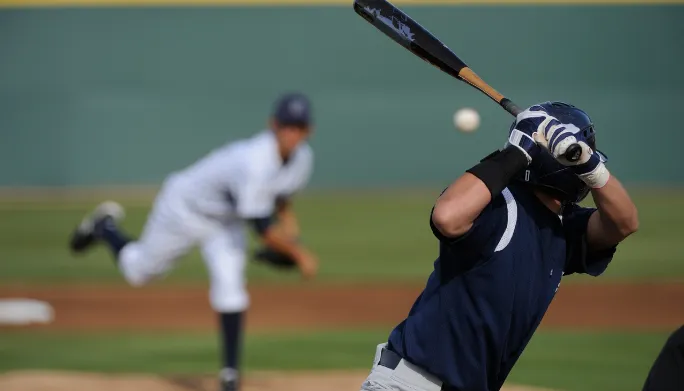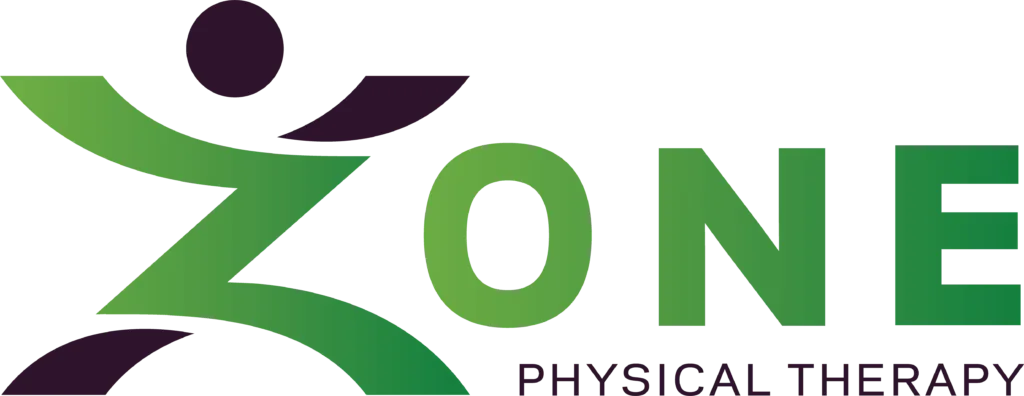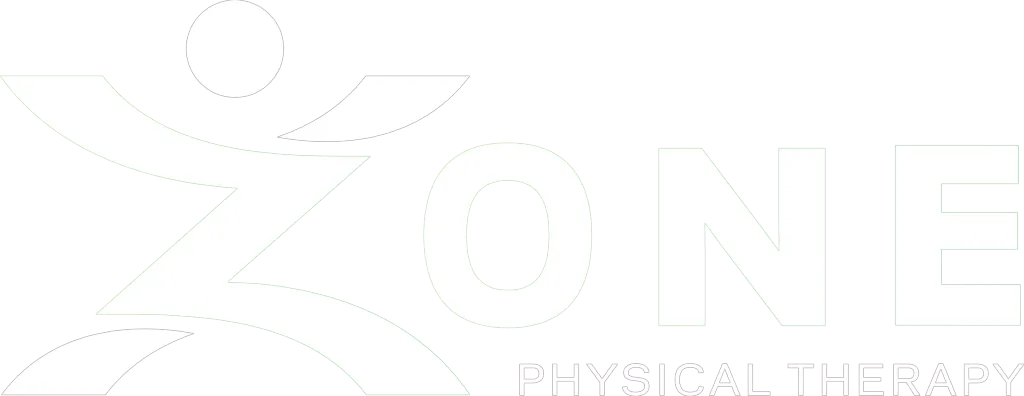Zone Physical Therapy
Baseball Throwing Injuries in Greer, SC
Treating Baseball Throwing Injuries in Greer, SC
Baseball may be America’s favorite pastime, but for many amateur and professional ballplayers, the repetitive throwing motion required can cause painful and debilitating injuries. If you’re suffering from chronic shoulder, elbow, or wrist pain that limits your performance or keeps you off the field entirely, the physical therapists at Zone Physical Therapy understand the frustration you’re feeling. We specialize in diagnosing and treating throwing injuries using targeted manual therapy techniques and advanced rehabilitation exercises tailored to help athletes like you return to peak form.

Throwing Injuries Lead to More Than Just Physical Pain
Beyond limiting your ability to participate in the sport you love, throwing injuries also inflict psychological pain as your identity as an athlete comes under threat. Even short breaks from baseball can negatively impact your skills, strength, accuracy, and confidence. Pushing through pain to keep playing often exacerbates existing injuries as well. But with prompt, expert care from our staff of licensed DPT, you can get back to doing what you love both safely and quickly.
Did you know that throwing injuries account for a staggering 25% of all youth baseball injuries requiring hospitalization? And weekend warriors aren’t immune either; recreational softball players over age 30 have a higher rate of shoulder and elbow injuries than professional players in many major sports leagues, in part because we fail to properly warm up or use improper throwing mechanics. But no matter your level of skill, age, or degree of injury severity, the physical therapists at Zone Physical Therapy employ proven techniques to:
- Alleviate pain and inflammation
- Restore strength and mobility
- Rebalance muscular symmetry
- Improve throwing efficiency and power
- Help athletes return to sports confidently
Common Throwing Injuries We Treat in Greer, SC
While all throwing injuries result from repetitive stress on the arm, the damage can occur in different areas. Common baseball-throwing injuries we frequently treat include:
1. Rotator Cuff Injuries
The rotator cuff comprises four muscles and accompanying tendons that stabilize the shoulder joint. During throwing, these tissues endure tremendous stress, often leading to:
- Rotator cuff strains and tears
- Shoulder impingement
- Bursitis and tendonitis
Rotator cuff injuries cause sharp shoulder pain that worsens with overhead motions. As tears progress, significant weakness and mobility loss result.
2. Ulnar Collateral Ligament (UCL) Tears
The UCL stabilizes the elbow to withstand valgus stress during throwing. When this ligament tears or becomes lax, “Tommy John” surgery is often necessary to allow competitive throwers to return to sports. Prior to surgery, physical therapy can help:
- Alleviate UCL pain
- Strengthen surrounding musculature
- Preserve range of motion
After surgery, careful rehab under our guidance optimizes outcomes.
3. “Little League Elbow” Growth Plate Injuries
Younger players with open growth plates are especially vulnerable to chronic overuse injuries. Pain on the inside of the elbow joint results from damage to the growth plate itself or ligament tears where tendons attach to bone. If caught early, just 4-6 weeks of rest and targeted physical therapy can help young athletes heal properly while avoiding permanent disability.
How Physical Therapy Helps Baseball Throwing Injuries in Greer, SC
No two throwing injuries or athletes are exactly alike. So we personalize rehabilitation programs to target each patient’s unique needs. After thoroughly evaluating the affected joints, surrounding muscle groups, throwing mechanics, and more. Our treatment plans that incorporate multiple techniques:
- Pain Relief Modalities
Hands-on modalities like ultrasound, electric stimulation, cold laser therapy, and massage relieve swelling and pain so you can progress through rehabilitation sequences properly.
- Joint Mobilizations
Gentle joint manipulation enhances mobility and circulation to accelerate healing.
- Advanced Strengthening Exercises
Using resistance bands, free weights, and more, we develop strengthening programs to resolve muscle imbalances and ensure the entire kinetic chain works synergistically to generate and withstand throwing forces.
- Thrower’s Ten Exercise Program
This specialized series boosts shoulder stability, allowing safe return to throwing activities with minimal re-injury risk.
- Throwing Mechanics Analysis
High-speed video analysis and sensor-based tech pinpoint inefficiencies in each athlete’s individual throwing sequence. Specific exercises then ingrain proper mechanics.
- Gradual Return-to-Throwing Programs
We ease athletes back into full throwing activities in a stepwise fashion to ensure complete recovery of flexibility, strength, control, confidence, and power. This process typically spans 6 phases over 4-6 months.
Every element of treatment focuses on the common goal of getting athletes healthy, confident, strong, and back on the field as quickly – and safely – as possible.
Frequently Asked Questions
How do you recover from throwing a baseball?
Whether you’re dealing with shoulder impingement, Tommy John surgery, Little League elbow, or simple overuse, physical therapy speeds recovery and reduces re-injury risks. After assessing damage, we develop graduated throwing programs tailored to your unique injury, position, skill level, and more. We start with gentle range of motion activities and progressively intensify strength training. Once the arm recovers adequate stability, we slowly reintroduce throwing from short distances on flat ground, increasing to longer distances and full mound throwing over time. Athletes work closely with our staff throughout the entire return-to-throw sequence.
What kind of exercise-related injury can throwing a baseball cause?
The rapid acceleration, extreme external rotation, and violent deceleration involved make throwing a baseball the fastest motion in sports. Without proper conditioning, technique, recovery, and gradual progression of throwing activities, the repetitive stress inflicts tremendous damage on muscles, tendons, ligaments, and joints throughout the body including:
- Rotator cuff tears
- Labrum tears
- Biceps tendonitis
- Oblique strains
- Ulnar collateral ligament (UCL) tears
- “Little League elbow” (damaged medial epicondyle growth plate)
- Wrist and forearm fractures
What to do if your arm hurts after throwing a baseball?
Arm pain after throwing signals injury to the joint structures, muscles, tendons, or ligaments. Left untreated, microscopic tears rapidly progress to more extensive, debilitating damage. So if you experience any soreness or loss of strength after throwing, immediately:
- Stop throwing – Further stressing the irritated tissues inevitably worsens the damage.
- Apply cold packs – Ice reduces swelling and inflammation, alleviating acute pain. Alternate cold therapy for 15 minutes several times per day after throwing.
- Take anti-inflammatories – Over-the-counter meds like NSAIDs minimize inflammation.
- Rest for several days – This gives acute tears time to start healing.
- Consult a physical therapist – Early intervention maximizes recovery speed and reduces re-injury risks. Our experts provide personalized treatment programs.
What is the main muscle used to throw a baseball?
No single muscle powers throwing – entire chains of muscles sequentially fire in precise coordination to whip the arm forward. The large external rotator cuff muscles (infraspinatus and teres minor) initiate movement by externally rotating the upper arm. As the shoulder reaches maximum external rotation, the powerful pectoralis major muscle then internally rotates the humerus while the latissimus dorsi pulls the arm forward. Finally, wrist flexors accelerate the forearm and hand to generate ball speed. Meanwhile, muscles like the serratus anterior and legs/core dynamically stabilize positions to transfer energy efficiently up the chain. Our physical therapists assess functionality throughout the kinetic chain, pinpointing weaknesses. Custom exercises strengthen every muscle essential for developing and withstanding rotational power.
About the Physical Therapists at Zone Physical Therapy
Our entire staff shares a lifelong passion for sports – and helping fellow athletes when injury strikes. Physical therapists have deep experience evaluating and resolving throwing injuries for players ranging from youth to semi-pro. Leveraging advanced manual techniques and proven exercise progressions, we personalize treatment for rapid, lasting recovery. Meet your injury recovery team:
Dr. Christina Schultz, DPT
In addition to DPT, Dr. Christina Schultz concentrates on helping patients regain pain-free wrist, forearm, and hand function after fractures or overuse syndromes from throwing.
Our entire caring, supportive staff looks forward to helping you heal!
About The Author
Dr. Scott Kaylor ignites movement in patients facing Physical Therapy, Sports Injuries, and IASTM. Their years of experience and dedication unlocks physical potential for a better quality of life. At Zone Physical Therapy in Greer, SC, Dr. Scott Kaylor wields a patient-centered approach, wielding cutting-edge techniques and bespoke care plans to conquer a vast array of physical challenges.


